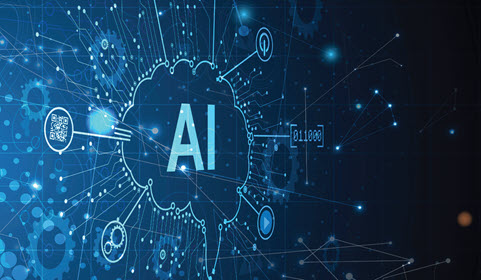Health Information Compliance Alert
Get Ready for These AI Updates in CPT® 2023
Hint: Analyzing data is just one piece of the AI puzzle.
There’s no denying that artificial intelligence (AI) is an important tool in healthcare — and CPT® 2023 has some new offerings.
Nuts and bolts: When coders open their 2023 CPT® code books, they’ll find a new addition to the appendices — Appendix S. The new appendix, “Artificial Intelligence Taxonomy for Medical Services and Procedures,” helps provide guidance for “classifying various artificial intelligence (AI) applications for medical services and procedures.”
Read on to learn more about CPT® guidance for handling AI-related procedures.

Get Up to Speed With the AI Appendix
The CPT® Editorial Panel decided to add Appendix S to the CPT® code set during the September 2021 meeting. The appendix went into effect on Jan. 1, 2022, to provide guidance on coding for AI applications. Since the appendix wasn’t effective until the start of 2022, it wasn’t present in the published 2022 CPT® code book. However, the 2023 CPT® code book will have the AI guidance listed in its appendices.
“AI needs a descriptive framework that is used to develop the coverage that, in turn, will adequately pay for expert systems, machine learning, and the algorithm-based services,” said Robert Jarrin, JD, managing member of The Omega Concern LLC in the “Coding, Coverage, and Payment for AI Medical Services” segment of the recent virtual event, “An ONC Artificial Intelligence Showcase – Seizing the Opportunities and Managing the Risks of Use of AI in Health IT.”
Jarrin added that Medicare payment rates include direct and indirect practice expenses (PE), the latter’s values are based off the Physician Practice Information survey conducted in 2007 and 2008 — “way before we actually had tangible AI in healthcare.”
The emerging technologies tend to rely on fees tied to software, licensing, and analysis, rather than the typical equipment and hardware purchases. “Coding will need to reflect AI, as in the work performed by machines, which is why the AMA created Appendix S to the CPT® code set as a taxonomy to provide guidance for classifying AI,” Jarrin said.
“I think it’s a testimony to how important this is that the AMA chose to release this taxonomy a full year in advance of when it would normally release a new code. This taxonomy is intended to cover not only AI in the formal sense like machine learning, but also what we might call expert systems, and that is the advanced use of computer technology in order to augment the role of the physician,” said Richard Frank, MD, PhD, CMO Siemens Healthineers, member of CPT® Editorial Panel, who co-presented with Jarrin during the virtual event.
Understand the 3 As of AI CPT® Coding Guidelines
The CPT® AI taxonomy appendix categorizes AI into three main hierarchies based on “the clinical procedure or service provided to the patient and the work performed by the machine on behalf of the physician or other qualified healthcare professional (QHP).”
These AI classifications are as follows:
- Assistive
- Augmentative
- Autonomous
Assistive AI is the work done by the machine to only detect clinically relevant data. A physician or other QHP is required to interpret the data and report the results.
An example of assistive AI is 77048 (Magnetic resonance imaging, breast, without and with contrast material(s), including computer-aided detection (CAD real-time lesion detection, characterization and pharmacokinetic analysis), when performed; unilateral). This procedure includes computer-aided detection (CAD) when a provider performs a magnetic resonance imaging (MRI) to examine the patient’s breast.
Augmentative AI occurs when the machine performs the work and analyzes or quantifies the data “in a clinically meaningful way.” This category also requires a physician or QHP to interpret and report the data.
A code example of augmentative AI is 95251 (Ambulatory continuous glucose monitoring of interstitial tissue fluid via a subcutaneous sensor for a minimum of 72 hours; analysis, interpretation and report). In this procedure, the provider analyzes and interprets data from a patient’s continuous glucose monitor (CGM). However, the augmentative AI allows the CGM to measure the patient’s glucose levels and analyze the data.
With autonomous AI, the machine performs the work, then automatically analyzes the data, interprets the information, and produces clinically relevant conclusions independently without physician or QHP involvement.
An example of autonomous AI is 92229 (Imaging of retina for detection or monitoring of disease; point-of-care automated analysis and report, unilateral or bilateral), where the provider performs retinal imaging of one or both of the patient’s eyes to diagnose or monitor a retinal disease. The system uses autonomous AI to image the retina and automatically analyze the images and provide a report. The entire procedure is performed with minimal human interaction.

Learn the Levels of Autonomous AI
Since autonomous AI can operate nearly free of human interaction, the CPT® Editorial Panel felt the need to establish different levels of autonomy. “We decided there needed to be at least three levels within [autonomous AI], we considered more, but I think the simpler, the better. As long as this covers the range of what we expect autonomous devices to be doing,” Dr. Frank said.
The three levels of autonomous AI differ on the amount of physician or QHP involvement as explained below:
- Level I – AI comes to conclusions and suggests diagnosis or management options. This level requires the physician or QHP to make the medical decision.
- Level II – AI draws conclusions and begins the diagnosis or management options with an alert to the physician or QHP. The provider then has the option to override the AI’s decisions.
- Level III – AI draws conclusions and initiates the management. Only by a physician’s or other QHP’s initiative to intervene could the service be interrupted.
Could the AI Coding Framework Anticipate Future Uses?
Appendix S guidelines indicate that there isn’t a certain product, service, or procedure where AI is necessary to describe the intended medical use. As a result, the appendix doesn’t list specific codes for which the guidelines could apply, although example codes are listed as references.
According to the presenters, the CPT® Editorial Panel created the taxonomy to define the relationship between the work completed by the machine and the work done by a human, as well as show the relevance to AI. “This taxonomy, this framework for AI code descriptors, anticipates what features that will be, as well as what business models there may be,” Dr. Frank said.
Health Information Compliance Alert
- HIPAA:
Measure Your Disaster Smarts With 10 Tough Privacy Questions
Remember, HIPAA applies to volunteers, too. When a natural disaster strikes, the last thing on [...] - Artificial Intelligence:
Get Ready for These AI Updates in CPT® 2023
Hint: Analyzing data is just one piece of the AI puzzle. There’s no denying that [...] - Revenue Booster:
Bolster Your Email Security with 10 Top Tips
Hint: Quiz staff on phishing ploys. Even the most tech-savvy folks get duped by email [...] - Compliance:
Feds Highlight Telehealth Rewards and Risks During the PHE
Caution: OIG continues to add telehealth services-related items to its Work Plan. During the heights [...] - Reader Question:
Know That a PHE Has Time Limits
Question: Is a public health emergency (PHE) ever shorter or longer than 90-day increments? Florida Subscriber [...] - Enforcement News:
OCR Settles 3 More Right of Access Cases
Dentists are the most recent offenders. The HHS Office for Civil Rights (OCR) continues to [...]

